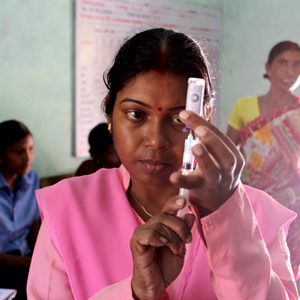
FULL REPORT HIGHLIGHTS AND KEY MESSAGES
Bacterial infections around the time of childbirth are among the leading causes of maternal mortality worldwide and account for about one-tenth of the global burden of maternal death.1,2 Apart from death, women who experience peripartum infections are prone to severe morbidity and long-term disabilities such as chronic pelvic pain, fallopian tube blockage, and secondary infertility. Maternal infections before or during childbirth are associated with an estimated 1 million newborn deaths annually.
Several factors have been associated with increased risk of maternal peripartum infections, including pre-existing maternal conditions (e.g., malnutrition, diabetes, obesity, severe anaemia, bacterial vaginosis) and spontaneous or provider-initiated conditions during labour and childbirth (e.g., prolonged rupture of membranes, multiple vaginal examinations, manual removal of the placenta, caesarean section). Strategies to reduce maternal peripartum infections and their complications have been largely directed at preventive measures where such risk factors exist. WHO recommendations prioritize evidence-based interventions for prevention and treatment of genital tract infections during labour, childbirth, and the puerperium.
Globally, the most common intervention for preventing morbidity and mortality related to maternal peripartum infection is the use of antibiotics for prophylaxis and treatment. However, antibiotic misuse for obstetric conditions or procedures that are thought to carry risk of infection is common in clinical practice. Such inappropriate use of antibiotics among women giving birth has implications for global efforts to contain the emergence of antibiotic-resistant bacteria. Hence, the recommendations address both the appropriate and the inappropriate use of antibiotics for prevention and treatment of peripartum infections. However, the management of severe sepsis and septicaemic shock is outside of the scope of these recommendations.